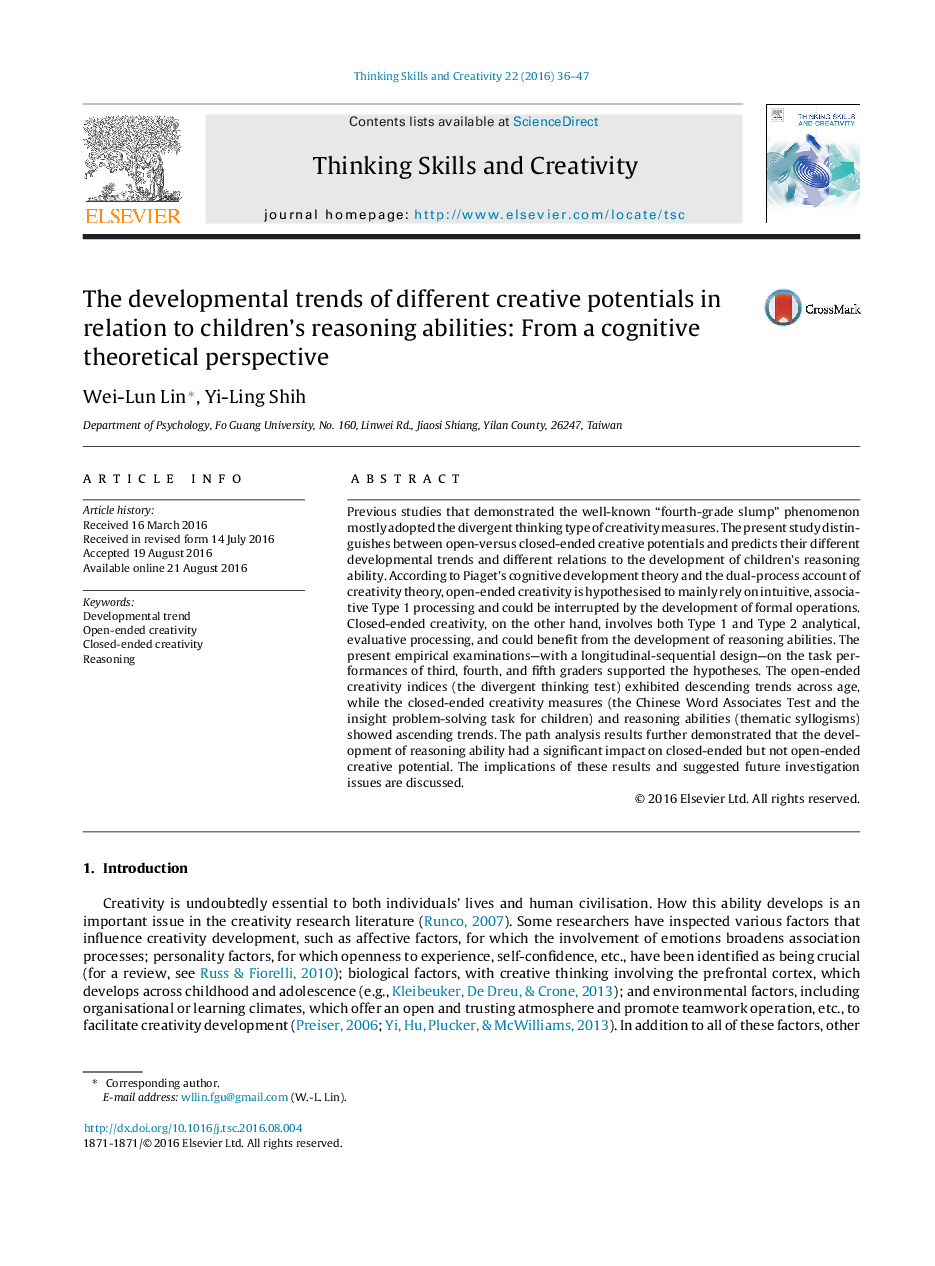| Article ID | Journal | Published Year | Pages | File Type |
|---|---|---|---|---|
| 4941891 | Thinking Skills and Creativity | 2016 | 12 Pages |
â¢The fourth-grade slump phenomenon is explained by Piaget's theory.â¢A longitudinal-sequential design is adopted for 3, 4, and 5 graders.â¢Open- versus closed-ended creativities exhibit different developmental trends.â¢Reasoning ability development is related to closed- but not open-ended creativity.
Previous studies that demonstrated the well-known “fourth-grade slump” phenomenon mostly adopted the divergent thinking type of creativity measures. The present study distinguishes between open-versus closed-ended creative potentials and predicts their different developmental trends and different relations to the development of children's reasoning ability. According to Piaget's cognitive development theory and the dual-process account of creativity theory, open-ended creativity is hypothesised to mainly rely on intuitive, associative Type 1 processing and could be interrupted by the development of formal operations. Closed-ended creativity, on the other hand, involves both Type 1 and Type 2 analytical, evaluative processing, and could benefit from the development of reasoning abilities. The present empirical examinations-with a longitudinal-sequential design-on the task performances of third, fourth, and fifth graders supported the hypotheses. The open-ended creativity indices (the divergent thinking test) exhibited descending trends across age, while the closed-ended creativity measures (the Chinese Word Associates Test and the insight problem-solving task for children) and reasoning abilities (thematic syllogisms) showed ascending trends. The path analysis results further demonstrated that the development of reasoning ability had a significant impact on closed-ended but not open-ended creative potential. The implications of these results and suggested future investigation issues are discussed.
